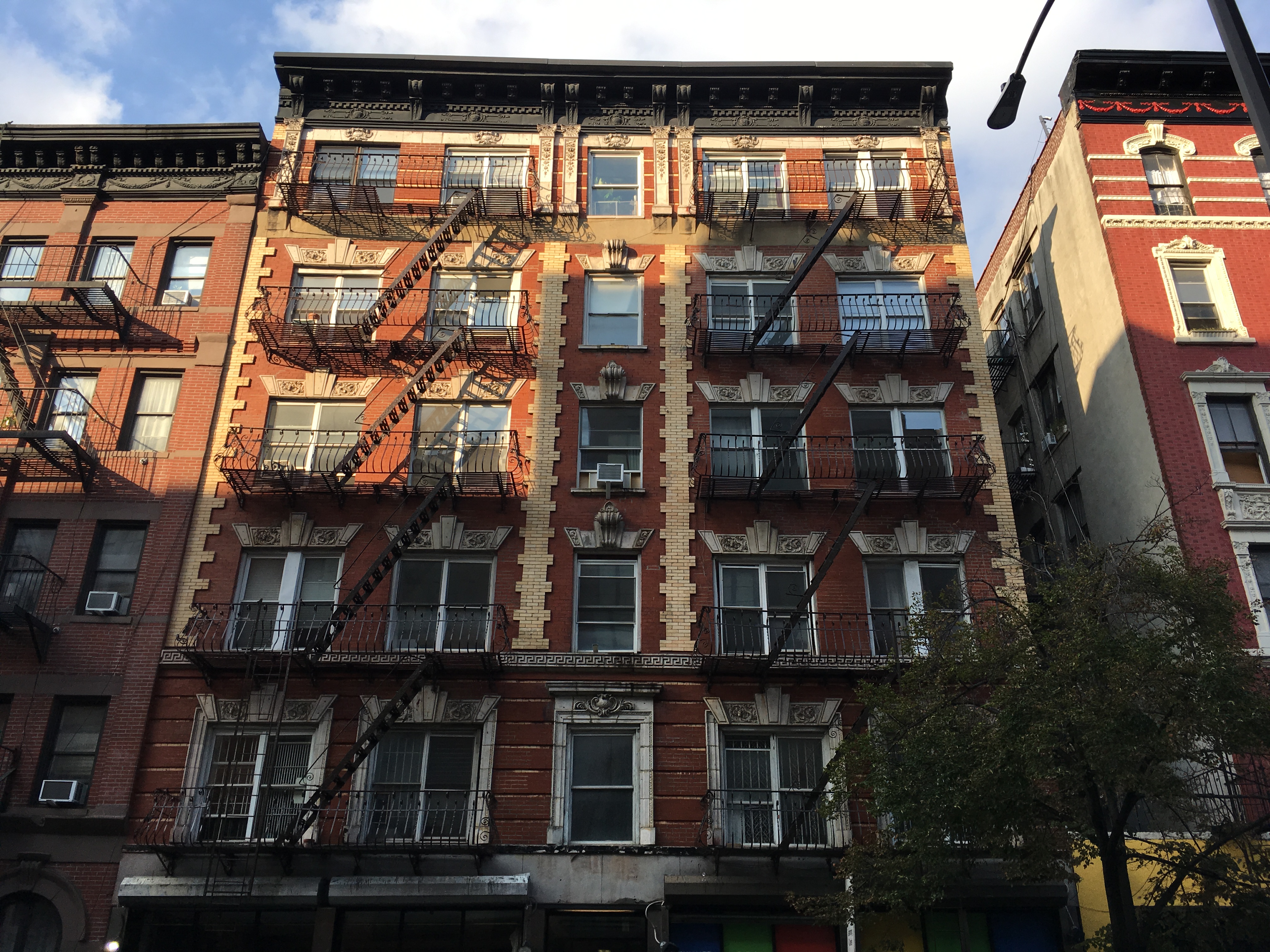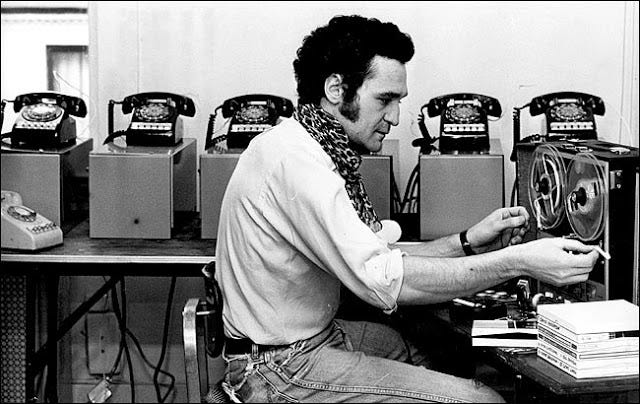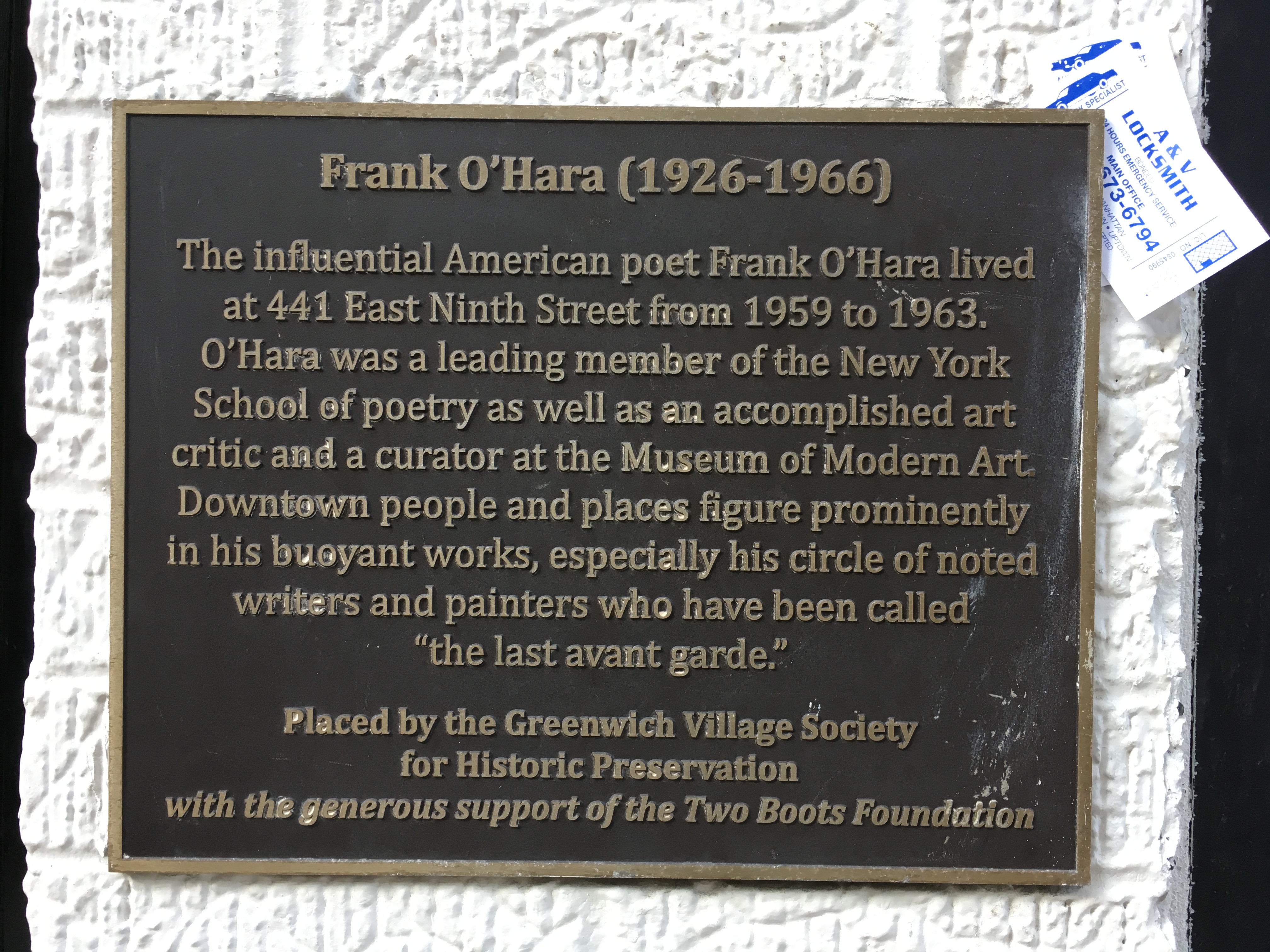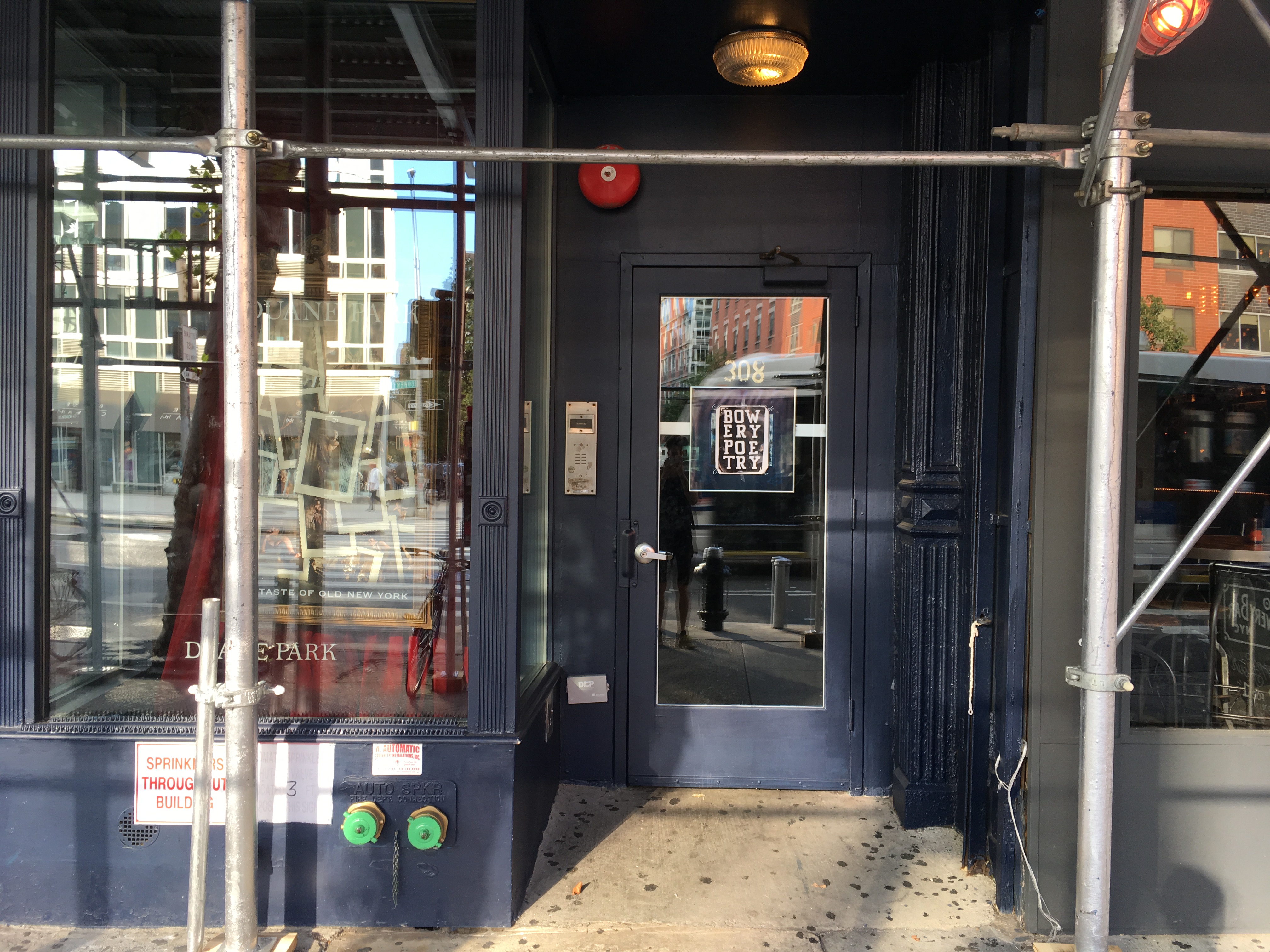Passing Stranger is an hour and a half long audio tour of the East Village, framed through the life stories and work of artists who have emerged and lived in the neighborhood during the second half of the 20th century. Curated by the Danish poet Pejk Malinovski and narrated by filmmaker Jim Jarmusch, the sound walk truly acts as a time portal to a less gentrified and more politically radical East Village, home to characters such as Allen Ginsberg, Patti Smith or The Velvet Underground. Having previously spent some time in the neighborhood, but never enough to know it intimately, the tour was a perfect opportunity to strenghten my friendship with the village’s streets and landmarks.

Image description: Frontal image of a church. The facade is built out of brick-like grey stone and is sustained by white round columns. In this image, the tower is partially hidden by trees in the near plane.
The walk starts at the cross of E10th Street and 2nd Ave, in front of the St. Mark’s Church-In-The-Bowery—one of the oldest religious sites in the city, also a culture hub of the neighborhood since the beginning of the 1900s. Poets would host readings here and politically progressive groups would gather in this space, and I find it beautiful that one of the oldest places in the city, especially one associated with religious practice, opened its doors to the local creatives, misfits, punks and to the opressed.

Image description: Photograph of a 5-story red-brick building, with 5 windows on each floor and visible fire escape stairs.
We proceed north on 2nd Ave then head east on East 12th Street, while learning about the opera influences in Walt Whitman’s poetry, passing Allen Ginsberg’s old apartment at 437 East 12th, and becoming familiar with Jon Giorno’s Dial-a-poem project. I want to stop here for a second, as this is an incredible work of early new media art, which uses a few telephones and a few tape players as a means to making poetry accessible to a wide audience, while creating a radical space and sharing it with the world. MoMA and The New Museum have included Dial-a-poem in a few shows recently, meaning that there is at least one active phone number that is running the project. Try it yourself: 641-793-8122.

Image description: A black and white image of a man operating an analog tape player machine. In the background we can see 6 rotary telephones placed on cube-shaped stands.
In terms of structure, the audio tour is split up into 30 different locations, each accompanied by a short episode. Every episode is a montage of narration which gives historical and political context, old recordings of poetry readings, interviews and music. There isn’t much in terms of sound effects or a rich soundtrack to accompany the voices speaking to us—that role is left open for Lower East Side’s streets live soundscape.

Image description: A bronze plaque on the building where Frank O'Hara used to live. The text reads: Frank O'Hara (1926—1966). The influential American poet Frank O'Hara lived at 441 East 9th Street from 1959 to 1963. O'Hara was a leading member of the New York School of poetry as well as an accomplished art critic and curator at the Museum of Modern Art. Downtown people and places figure prominently in his buoyant books, especially his circle of noted writers and painters who have been called "the last avant garde". Placed by the Greenwich Village Society for Historic Preservation with the generous support of the Two Boots Foundation.
To conclude, in addition to the beautifully curated content, it felt refreshing to participate in this “mixed reality” experience in a low-tech way—with simple earbuds, which allowed for the street sounds to merge with Jim Jarmusch’s narration, without a computerized GPS voice in my ears suggesting when to turn left and right, or without an augmented reality layer to bring the space to life, digitally. The audio was truly engaging, and the necessity of being proactive in finding my way to the different locations contributed to the sense that I am discovering a new place and a new time.

Image description: Entrance of the Bowery Poetry Club. The center of the image contains a navy blue door with the number 308 written on it. Underneath the street number, we can see a poster which reads "Bowery Poetry". In front of the door there are poles belonging to construction scaffolding.